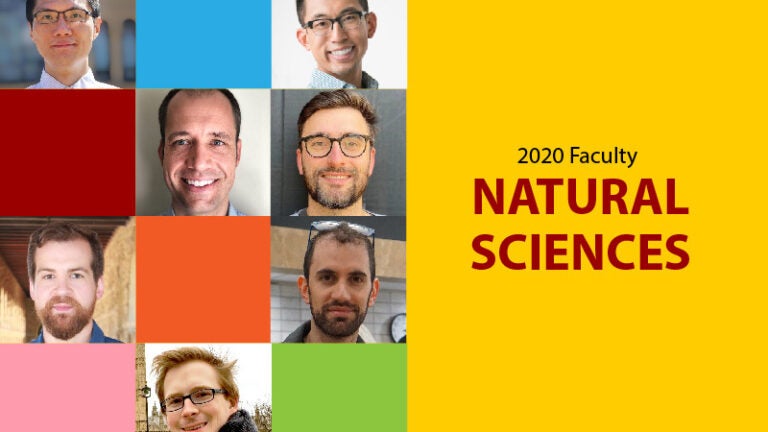
A new group of natural sciences professors brings cutting-edge research and instruction to USC Dornsife
A new group of natural sciences faculty arrived at the USC Dornsife College of Letters Arts and Sciences in 2020 and didn’t let the COVID-19 pandemic stop them from setting up labs, engaging with students and conducting important scientific research. They recently shared their academic work and personal interests.
Xianrui Cheng | Assistant Professor of Biological Sciences
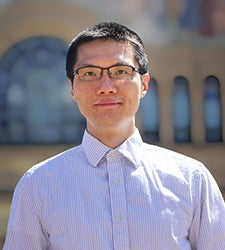
Academic focus: I’m researching how the spatial pattern of a living cell is assembled and how it contributes to cellular functions. We have recently discovered that in a plastic dish, the juice (cytoplasm) from frog eggs can spontaneously re-organize into patterns seen in living cells.
More strikingly, these patterns recapitulate cellular functions; they can repeatedly self-replicate like cells do. My lab is using this egg extract system as a model to study the mechanism of pattern formation within cells.
What do you like to do in your spare time? Gardening and photography.
What inspires you? Nature, people and art.
Peter Chung | Assistant Professor of Physics and Astronomy
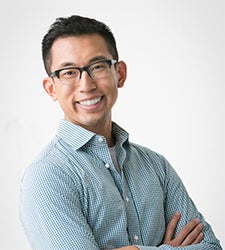
Academic focus: I study proteins that do not fold into stable structures but rather behave structurally like spaghetti in boiling water (adopting many conformations over time). Using a framework of polymer physics, I aim to understand the physiological function and diseased dysfunction of these proteins. The latter is especially important, as nearly every major neurodegenerative disease is unequivocally linked to these unstructured proteins.
What do you like to do in your spare time? Financially sustaining every nearby food truck within a two-block radius of my apartment.
If you could invite one person to dinner, living or dead, who would you select? What would be on the menu? Robert Oppenheimer lived a fascinating life that spanned theoretical physics and leadership in the Manhattan Project, the government program that led to the deployment of the most terrible weapons to ever exist. As he loved his adopted home state of New Mexico, I’m sure we’d both enjoy tacos.
What inspires you? The students I see at USC. They’re full of energy and enthusiasm!
Michael “Doc” Edge | Assistant Professor of Quantitative and Computational Biology
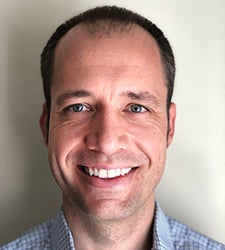
Academic focus: I develop and use new ways to analyze genetic data with an eye toward understanding our evolutionary history. People who work in my lab are also interested in ways we can use evolutionary thinking to do other jobs that require genetic data, such as finding disease-associated genetic variants or protecting privacy in forensic genetics.
Where is your favorite place to travel? I didn’t realize my feelings about the American Southwest could be embarrassing until I saw them embodied in Will Ferrell’s character on The Office. But I’ve never had a bad trip anywhere.
If you could invite one person to dinner, living or dead, who would you select? What would be on the menu? I can’t narrow it down. I will give you a top three among those who use the first name George: Eliot (aka Mary Ann Evans), Saunders, Clinton (the musician, not the U.S. founding father). They can eat whatever they want.
What food or condiments will we always find in your kitchen? Paprika is my favorite crutch.
Geoffrey Fudenberg | Assistant Professor of Quantitative and Computational Biology
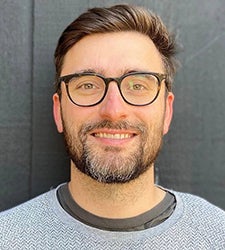
My work aims to connect molecular-scale mechanisms with their genome-wide consequences and uses machine-learning and biophysical modeling approaches to decode connections between 3D genome organization and function.
Cornelius Gati | Assistant Professor of Biological Sciences
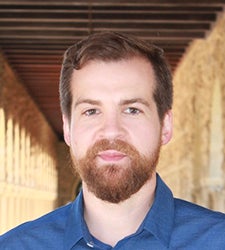
Academic focus: I’m interested in neurotransmission at the atomic scale. Our group focuses on the structure determination of membrane proteins involved in synaptic transmission using the powerful technique of cryo-electron microscopy.
What inspires you? I get my best ideas while driving (coincidentally something I spend a lot of time doing).
What do you like to do in your spare time? I like to spend time outdoors; hiking and camping are some of my favorites.
Where is your favorite place to travel? Hawaii.
Kyler Siegel | Assistant Professor of Mathematics

Academic focus: I work in symplectic geometry, a relatively young branch of mathematics that aims to understand the fundamental properties of various geometric structures from theoretical physics. It lies at the crossroads of a number of subfields of mathematics including algebraic geometry, topology and differential geometry and also has interactions with string theory.
What do you like to do in your spare time? Jazz guitar, rock climbing, hiking, tinkering, reading and exploring cities by bike.
Favorite book you’ve read lately? The Code Breaker by Walter Isaacson
Harold Williams | Assistant Professor of Mathematics
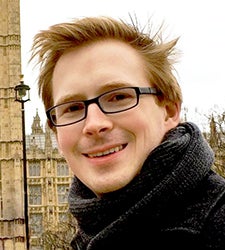
Academic focus: I study geometric and algebraic structures that appear in high energy physics.
What do you like to do in your spare time? I like to play my guitars.
If you could invite one person to dinner, living or dead, who would you select? What would be on the menu? Brian May. Whatever happens to be on the menu at Noma that night.
What inspires you? How interesting the universe is.
Learn about other faculty who joined USC Dornsife during the 2020–21 academic year >>